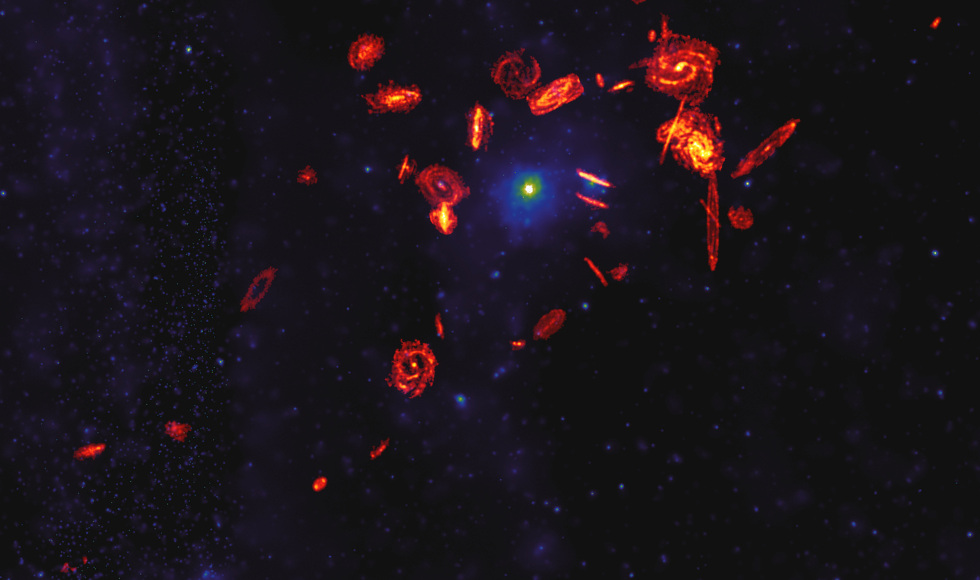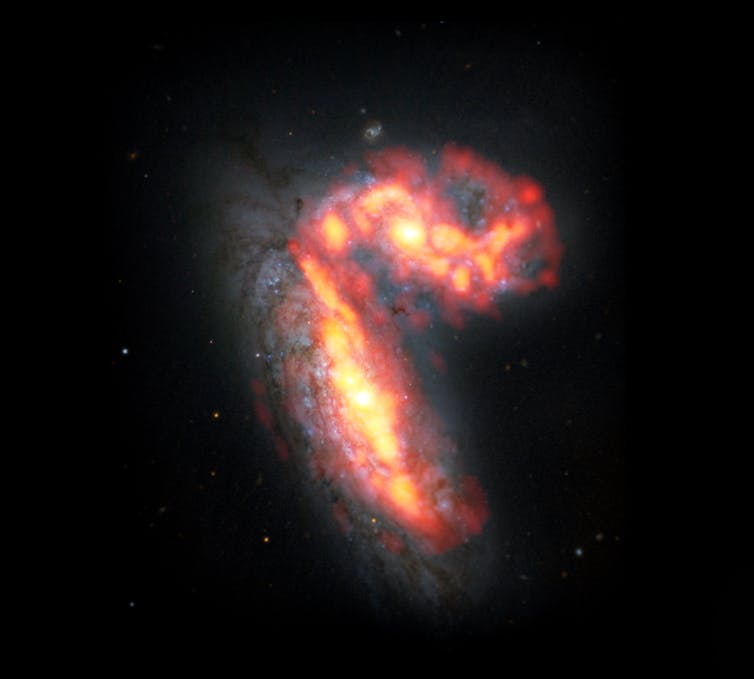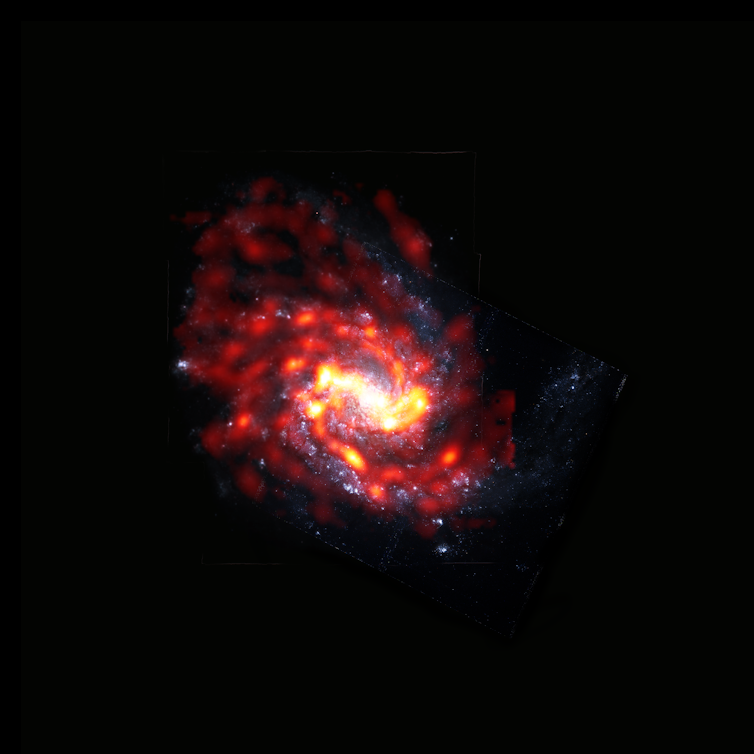Analysis: Why it’s location, location, location, even when it comes to galaxy evolution

A composite image of the data collected by the ALMA telescope in Chile, showing spiral galaxies in the Virgo Cluster. ALMA (ESO/NAOJ/NRAO)/S. Dagnello (NRAO)/T. Brown (VERTICO)
BY Toby Brown
November 29, 2021
Star formation — the conversion of gas into stars — is arguably the most important process in the universe. Yet there are regions of space that are so tempestuous, so inhospitable that star formation can be completely halted in the galaxies that reside there.
Astronomers have spent the last 50 years asking: Why is star formation linked to the region of space in which a galaxy lives? And how is it stopped?
A new research project, the Virgo Environment Traced in Carbon Monoxide (VERTICO) Survey, tries to answer these questions using the world’s most advanced ground-based telescope. The goal is to reveal the influence of so-called galaxy environments on molecular gas, the raw fuel for star formation, in detail.
A hostile neighbourhood
VERTICO is focused on a particularly extreme region of space called the Virgo Cluster, named for its location in the Virgo constellation in the night sky. This cluster contains thousands of galaxies bound together by gravity into one vast superstructure. Galaxy clusters such as this one are the ideal place to observe the effects of environment on star formation.
To understand just how extreme the Virgo Cluster is, it is helpful to place it in the context of our own galactic neighbourhood. The Milky Way resides in a rather benign group of approximately 80 galaxies that is spread out over five million light-years. In contrast, the Virgo Cluster is more than 1,000 times the mass of the Milky Way, and contains thousands of galaxies in a region of space that is only about three times the size of the Milky Way’s group.
Such a large amount of mass in such a small volume causes extraordinary gravitational forces, which in turn accelerate galaxies to speeds of millions of kilometres per hour and superheat the plasma that permeates the cluster to millions of degrees Celsius. It is these violent conditions that give rise to a class of physical phenomena so powerful they can stop hundreds or even thousands of galaxies from forming stars.
VERTICO is a Canadian-led collaboration of international astronomers that used the Atacama Large Millimeter Array (ALMA) in the Chilean Andes to provide some of the most detailed images ever taken of the star-forming gas in Virgo Cluster galaxies.

Galaxies NGC 4567 and NGC 4568 shown in composite radio data from ALMA with molecular gas in red/orange and optical data from the Hubble Space Telescope with stars in white/blue. (ALMA (ESO/NAOJ/NRAO)/S. Dagnello (NRAO)/T. Brown (VERTICO))
With these state-of-the-art data, we are able to identify the physical processes that are affecting how galaxies form their stars by observing their influence on 51 galaxies within the Virgo Cluster.
When we studied the beautiful images captured, we found that, in the Virgo Cluster, external physical processes are capable of reaching far into galaxies to perturb their molecular gas, affecting how stars are born and the galaxy evolves.
Over the next few years, our team will continue to mine this rich resource for insights into how stars form and galaxies grow in extreme environments such as the Virgo Cluster.
How do galaxies grow?
A valid question to ask of any scientist is, why does this matter?
From an academic perspective, one of the most satisfying things about astronomy is that simple questions can lead us straight to the frontiers of human understanding. Basic questions such as “Why do stars form?” and “How do galaxies grow?” sit right at the heart of the VERTICO collaboration’s research and will provide the foundation on which the next generation of astronomy will be built.
Astronomy research is a great Canadian, global and human success story. The VERTICO collaboration consists of almost 40 researchers from nine countries, each with their own culture and language. This team has come together to conduct cutting-edge work using the world’s most advanced telescope that has been built in Chile using North American, European, Asian and South American technology and expertise.

Scientific projects such as VERTICO drive an exchange of people, ideas and funding between organizations and across borders that is of critical importance to the social, economic and academic fabric of our society.![]()
Toby Brown, Postdoctoral fellow, Astrophysics, McMaster University. This article is republished from The Conversation under a Creative Commons license. Read the original article.


